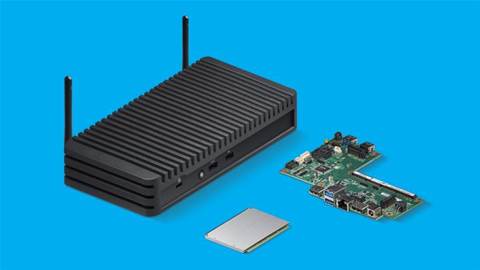The need for edge computing is expected to continue as demand on networks increases – and it’s an opportunity for the channel.
One of the challenges for edge computing projects is where the work is being done – which includes environments where it’s difficult to have computers on-site. And with 5G technology expected to provide more high-speed connectivity for some, edge computing opportunities are only going to increase.
The channel can build new solutions that facilitate and enable innovation where the work is being done at the edge.
“You really have two choices with edge; you can either gather the information and send a lot of it back to a server somewhere, to then process the data remotely,” Intel Marketing Communications Manager, Intel NUC, Bruce Patterson, said. “Or, in most cases with edge, want to put some intelligence at the sensors, so that you can do some level of analysis at the point of the data with dedicated AI/ML-orientated data processing.”
This is where Intel positions its rugged NUC Elements compute solutions: the NUC 8 (Chandler Bay) and NUC 11 (Elk Bay). They include the rugged Austin Beach chassis design for industrial applications, and Fort Beach for commercial/prosumer/consumer users – the NUC line’s small form factor enables channel organisations to target a variety of challenging use cases.
These devices can be powered over Ethernet, and the vPro Compute Units have extensive remote management features: they can be turned on and off remotely and the NUCs themselves have the capability to reboot themselves if something goes wrong.
These features make the NUC suited to harsh environments. For example, during bushfires in Australia, NUC devices were used to drive robots to enter houses damaged by fire and determine if the building was structurally sound without risking the lives firefighters.
“We’ve (also) seen the NUC deployed to aid education in rural and remote classroom experiences, which has been particularly pertinent with COVID-19,” Patterson said. “And, through COVID, we saw hospitals deploying NUC units in rooms to allow doctors and nurses to get all the data that they needed to monitor patients without needing to enter the room as frequently. Hospital environments are actually quite challenging, so they needed a rugged solution like the NUC.”
The opportunity for the channel
Edge computing deployments will always be highly tailored to a sector and business. The opportunity for the channel, Patterson argues, is in helping customers understand the potential for edge computing deployments – because it’s new enough that the opportunities are not always apparent to business leaders.
“They're going out and helping these SMEs overcome technological challenges that they're just not equipped and staffed to deal with,” Patterson said. “The channel partners are the best people to come in and offer up solutions that these businesses leaders just didn’t know was possible. Their energy is not focused on learning about technology, or talking to vendors trying to sell them individual products that they would then need to go and figure out what to do with it. The channel partners have a real opportunity with edge computing to be that trusted advisor with the holistic solutions.”
With this in mind, the NUC line is highly customisable and flexible, Patterson said. Its flexibility should also makes it easier to maintain, scale and upgrade. That may help channel partners deliver timely services around the device, and integrate it into managed services where the engagement is focused on iterative upgrades and ongoing support.
“By having this modular design where the compute is separate, you get the great ability to service the device in a much easier way,” Patterson said. “If something goes wrong or something needs to be changed, you have the ability to just simply swap out the compute element. It's literally a one-minute job to unscrew a few things and insert a new compute element. So, your service ability gets much easier when it's an element-based solution, rather than a traditional PC solution.”
Find out more about the Intel NUC Elements family here.




.png&h=142&w=230&c=1&s=1)

.jpg&h=142&w=230&c=1&s=1)

_(21).jpg&h=142&w=230&c=1&s=1)




.jpg&w=100&c=1&s=0)







.jpg&q=95&h=298&w=480&c=1&s=1)


